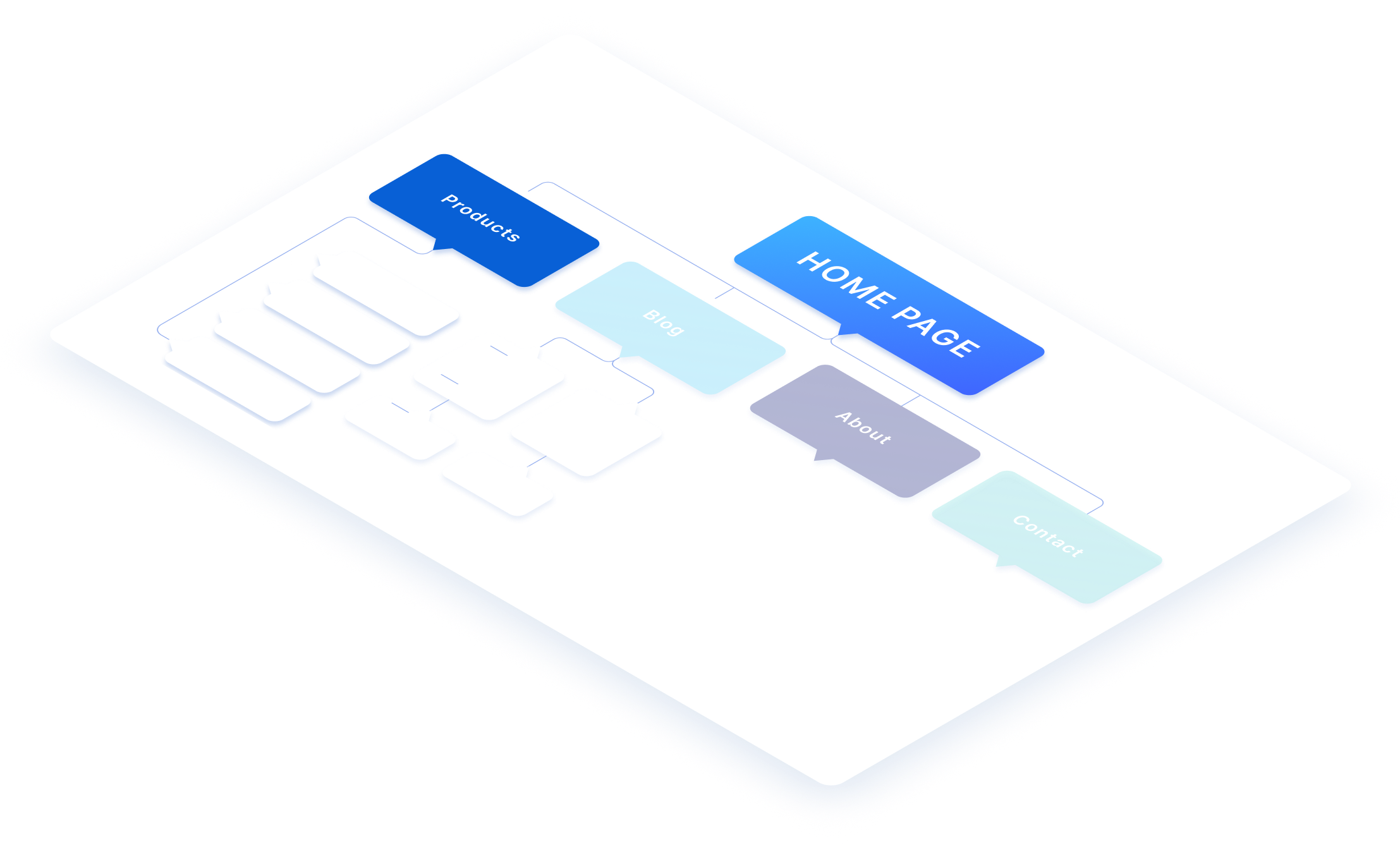
Website Audit: How to Audit Your Website
Wondering how to evaluate the health of your website and correct the errors that impede its performance? The solution lies in conducting a thorough website audit.

What’s the Purpose of a Website Audit?
What is a website audit?
Performing a website audit is similar to visiting a doctor for a check-up. It’s done to assess the overall health of your website, diagnose any issues, and provide appropriate treatment. In essence, an audit involves conducting a comprehensive analysis of your website, considering factors such as technical aspects, SEO performance, conversion rates, and market positioning in comparison to competitors. A website audit helps the webmaster or the service provider responsible for website management and SEO to identify potential errors that affect performance, discover growth opportunities, and create an action plan to ensure competitiveness.

Why should you analyse your website?
Why should you conduct a website audit?

-
To improve performance
A website audit aims to evaluate your website’s current performance, identify any issues (technical, SEO-related, user experience, conversions, etc.), and make necessary corrections. The audit provides an overview of your website’s health and offers recommendations to optimise its effectiveness, aligned with your marketing objectives.
-
To improve SEO
In most cases, a website audit focuses on improving SEO. It may involve starting a strategy from scratch or realigning an existing one that isn’t yielding desired results. The audit helps identify errors and determines the key areas to prioritise for enhancing SERP and increasing traffic volume.
-
To optimise conversions
A website isn’t just about generating traffic and relying on visibility in the SERP. Conversion is an even more crucial aspect: it’s about creating the right conditions for visitors attracted to the site to become leads and eventually customers of the business or brand. This is where a website audit comes in handy: to optimise conversions.
-
To rectify anomalies
Websites can experience sudden drops in traffic or unexpected declines in SEO rankings. These anomalies are sometimes a result of penalties imposed by search engines. A website audit helps identify the issues that are impacting your page’s positioning in the SERP and enables you to rectify them before they cause significant damage.
-
To assess the competition
A website is never alone in its market. It’s essential to consider the competition, which can vary in intensity depending on the level of maturity of your direct rivals. Whether you’re building a new website, redesigning an existing one, or improving its performance, it’s crucial to keep an eye on what others are doing. Why? To either draw inspiration from their approach or take a different path altogether.
Website audit: Which sites should be audited?
All types of websites, including showcase sites, e-commerce platforms, media sites, and institutional sites, should undergo periodic audits. However, it becomes an obligation when your website is the primary sales channel. This is particularly relevant for e-commerce sites (B2C or B2B) as maintaining their functionality, ensuring transaction security, and optimising the conversion rate are critical. As for the timing, there’s no one-size-fits-all answer. A website audit should be conducted when the need arises or regularly, such as every quarter, to ensure its well-being and provide opportunities to optimise its performance as frequently as possible.
What are the key areas to audit?
What type of website audit do you wish to perform?
To conduct a website audit, it is important to define the evaluation criteria. Similar to how a doctor focuses on the symptoms described by the patient, an audit concentrates on the crucial point(s) that the webmaster or SEO specialist wants to assess. While SEO is a prominent aspect, it is not the sole consideration within the analysis. Other factors of analysis include technical aspects, design, the resulting user experience, conversion strategies, and more. The first step is to evaluate your approach based on the objectives assigned to the audit.


What types of website audit are there?
-
The technical health of the site
This audit aims to identify issues encountered by the site, such as broken links, “400” or “500” errors in redirects, duplicate content, slow-loading pages, limited mobile compatibility, and inadequate security. These errors can have a negative impact not only on search engine crawls but also on the user experience.
-
Design and user experience
For a website, design plays a vital role as it influences the users’ decision to stay, explore pages, or leave immediately. The design audit is closely linked to the quality of the user experience, including visual elements, information hierarchy, usability, navigation and interaction smoothness, and ease of finding desired content.
-
SEO audit
The SEO audit focuses on the overall page rankings in the SERP and encompasses two dimensions. Firstly, on-site SEO, which concentrates on all internal factors of the website: content, keywords, tags, page indexing, etc. Secondly, off-site SEO, which encompasses all external components such as backlinks, authority, customer reviews, and social presence.
-
Quality of web content
Although content analysis is integrated into SEO, it is possible to initiate a dedicated audit. The objective is broader in this case: to evaluate the overall quality of the content, its relevance (in terms of meeting user expectations as well as brand consistency in messaging and tone), and its ability to convert users.
-
Effectiveness of conversion strategies
In an effort to optimise the conversion rate or CRO, this type of audit aims to evaluate the effectiveness of your website in acquiring qualified leads and converting them. It examines the entry channels, pages visited, the efficiency of the sales funnel, the relevance of CTAs and landing pages, and the quality of forms.
-
Performance of competitor sites
Analysing your main competitors’ websites for comparison purposes is also possible. A website audit then becomes a benchmarking tool that helps you understand your position, draw inspiration from what others are doing (how they attract visitors, the types of content they offer, etc.), and provides insights for exploring new markets.
-
Other areas to audit
A website audit can target other components as well, such as social media presence (level of user engagement, proportion of site traffic coming from social accounts), web marketing activities and their impact on conversions and sales volume, compliance with GDPR requirements, and more.
What tools can be used for a website audit?
For a website with hundreds, or even thousands, of pages, conducting a manual verification process would take days and require a wide range of skills, making it nearly impossible to obtain a comprehensive and precise overview of the site’s performance. Thankfully, there are several tools available that can handle this task – or specific aspects of it – on your behalf. These tools range from simple ones like Google Analytics, Search Console, your CMS backend, and PageSpeed Insights, to more advanced and informative options like Screaming Frog, SEMrush, MOZ, and others. Of course, it’s a good idea to entrust this process to a specialised agency, such as Eskimoz, that has extensive experience in conducting audits and a deep understanding of these diverse tools!
What issues are revealed by a website audit?
Website audit:
Technical errors
-
Crawl errors
Certain pages cannot be crawled by search engine robots, yet these pages may hold strategic importance.
-
Slow loading times
The report indicates whether your pages load quickly or too slowly. In the latter case, it can adversely affect user experience.
-
Weak site security
The “HTTPS status” of your site assesses its security for users. It informs you, for instance, if your SSL certificate has expired.
-
Limited mobile compatibility
Is your site easily accessible from mobile devices? An audit highlights any accessibility and display issues on various devices.
-
Redirection problems
Redirections play a crucial role during a redesign or migration. A website audit helps identify any malfunctioning or outdated redirections.
-
Poorly structured URLs
Issues such as special characters, excessive use of connectors or hyphens, and overly long text can undermine the effectiveness of your URLs.
Website audit:
SEO-related issues
An SEO audit covers a wide range of checkpoints, some of which overlap with the technical audit (that’s why both analyses are often conducted together). What SEO problems could your site encounter? Here are some common issues to be aware of.
-
Duplicate content problems
Duplicate content is quite common, and it’s almost inevitable. The SEO audit will indicate the extent of duplicated content on your site and provide specific details.
-
Structural concerns
The site’s architecture is crucial for navigation and crawling. The audit will provide insights into page depth and internal popularity.
-
Orphan pages and content
Orphan content, a common issue, occurs when certain content isn’t properly linked to the rest of the site, resulting in it being overlooked by search engine crawlers. However, this content may still generate traffic.
-
Link-related challenges
These problems may involve backlinks (inbound links), outbound links, or internal linking, all of which can have significant SEO implications.
-
SEO enhancement issues
Over-optimisation (such as excessive keyword usage or unnatural link anchors) or under-optimisation (like missing tags on a page) can both affect SEO performance.
-
Incorrect code usage
Improper implementation of structured data can lead to negative consequences, while conflicts in directives can hinder the proper crawling of pages.
Content-related errors
Content plays a vital role on websites, serving both search engines and users. During a content-specific website audit, various errors can be identified, and it’s important to address them promptly.
By addressing these issues revealed by an SEO audit, you can improve your site’s performance and enhance its visibility in search engine results.

-
The content lacks uniqueness
Duplicate content should be avoided at all costs, and instead, prioritise unique, original content that aligns with the nature of the business and its commercial objectives.
-
The content lacks relevance
Each piece of content should be crafted with the audience in mind: informative, relevant to their needs, and capable of providing added value.
-
The content is not crawled
A page that isn’t crawled by search engines is simply disregarded. It is important to verify both indexing rules and links to ensure proper indexing.
-
The content is too short
Search engines appreciate content with editorial value. Aim for 400 words or more (except for product listings).
-
The content is not optimised
Every piece of content should be optimised for search engines following SEO best practices, including proper structure and tag implementation.
-
The content lacks quality
Quality is what makes content valuable, both for users and search engine bots. This also applies to spelling and grammar.
Analysis of audit results and implementation
The mentioned errors are just examples of what a website audit can uncover. Once the audit is successfully conducted, it’s crucial to take the time to analyse the results and generate a list of the identified issues to address subsequently. This list helps to stay organised and keep track of progress as the necessary corrections are made. This becomes particularly important when tasks are distributed among multiple individuals or departments. While audit tools may automatically generate reports after each analysis, it’s still important to rely on experts to translate them into actionable recommendations and implement them diligently!

Our Commitment
-
Expertise
Since 2010, we have worked with over 2000 clients across 90 countries.
-
Passion
We are a team of passionate, industry-focused individuals who are committed to your success.
-
Performance
We’re committed to implementing a data-driven strategy, making a real impact on your bottom line by providing avenues for growth.
Any questions?
A website audit involves a comprehensive analysis of a website. It examines various aspects, including the site’s technical aspects, SEO performance, design (and resulting user experience), and how it compares to competitors. Conducting a website audit is done either when there is a need or on a regular basis to monitor its performance.
The purpose of a website audit is to identify any issues that a website may be facing, whether they are technical or related to search engine optimisation. By conducting a website audit, you can improve overall performance, develop an SEO strategy, enhance conversion rates, address technical anomalies, and ensure competitiveness against rivals.
To conduct a website audit, start by assessing your specific needs and determining the type of audit required, such as a technical audit, design audit, SEO audit, semantic audit, content audit, or a combination of these. Next, choose the appropriate tools or consider seeking assistance from a specialised website audit agency. Analyse the results and create a list of identified issues, with the intention of implementing corrective actions accordingly.














